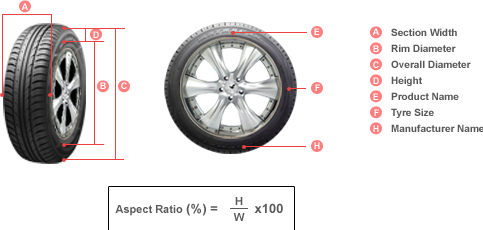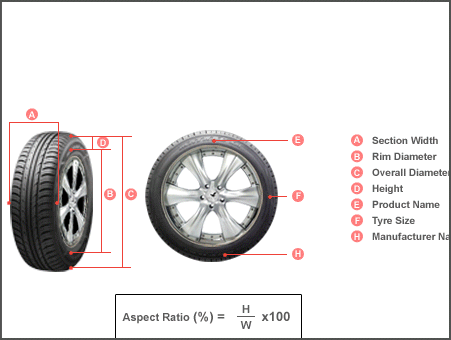Tyre Safety
The law
It’s against the law to have:
Car tyres with tread worn to below 1.6mm;
A mix of radial and cross ply tyres;
Over or under-inflated tyres;
Tyres with cuts, lumps, bulges or tears;
The wrong sort of tyre fitted to a vehicle or trailer.
Safety standards
All new tyres must meet European standards for load/speed performance, shown by an ‘E’ or ‘e’ mark on the sidewall.
All retread tyres supplied in the UK must comply with the British Standard AU144e, and be marked with this number. This proves they have been thoroughly tested and meet the same performance standards as new tyres.
Only buy second-hand tyres if they are marked ‘part-worn’ next to the E or BS mark, to show they have been properly checked for faults.
Checking tread depth
Most tyres have tread wear indicators, usually six or more small ribs across the bottom of the main tread grooves. When the tread surface is level with these ribs, the tyre needs to be replaced.
Checking tyre pressures
Look in your handbook or consult your garage or tyre dealer for the recommended pressures for your vehicle.
You should check the pressure at least every two weeks, and only when the tyres are cold. Even a short trip to the local garage will warm up the tyre and raise the pressure.
Speed Ratings
Tyre Speed Symbol Tyre Speed Rating
km/h mph
S 180 112
T 190 118
U 200 125
H 210 130
V 240 149
W (ZR) 270 149
Y (ZR) 300 186
ZR Above 240 Above 149
Aspect Ratio

Low profile tyres
What is a ‘Low Profile Tyre’?
The continual development of the motor vehicle, notably engine technology, means that average vehicle performance is constantly increasing and this correspondingly places increased requirements on tyre technology. Compared to conventional passenger car tyres, low profile tyres have greater width ratio to cope with the demands of higher performance vehicles – there are even 35 and 30 series available on the market.
Are there any other considerations to be aware of?
You should remember that if you replace your tyres with lower profile tyres then the corresponding height of the tyres will be also be decreased. Therefore when you replace your tyres with lower profile tyres you may need to replace your wheels with a larger ones.
Disadvantage of the wide tyre
Wide tyres are best for high speed performance. However, the greater contact area between the tyre and the road, the more road noise. With tyre technology constantly improving, this disadvantage is being reduced
WHEEL ALIGNMENT

